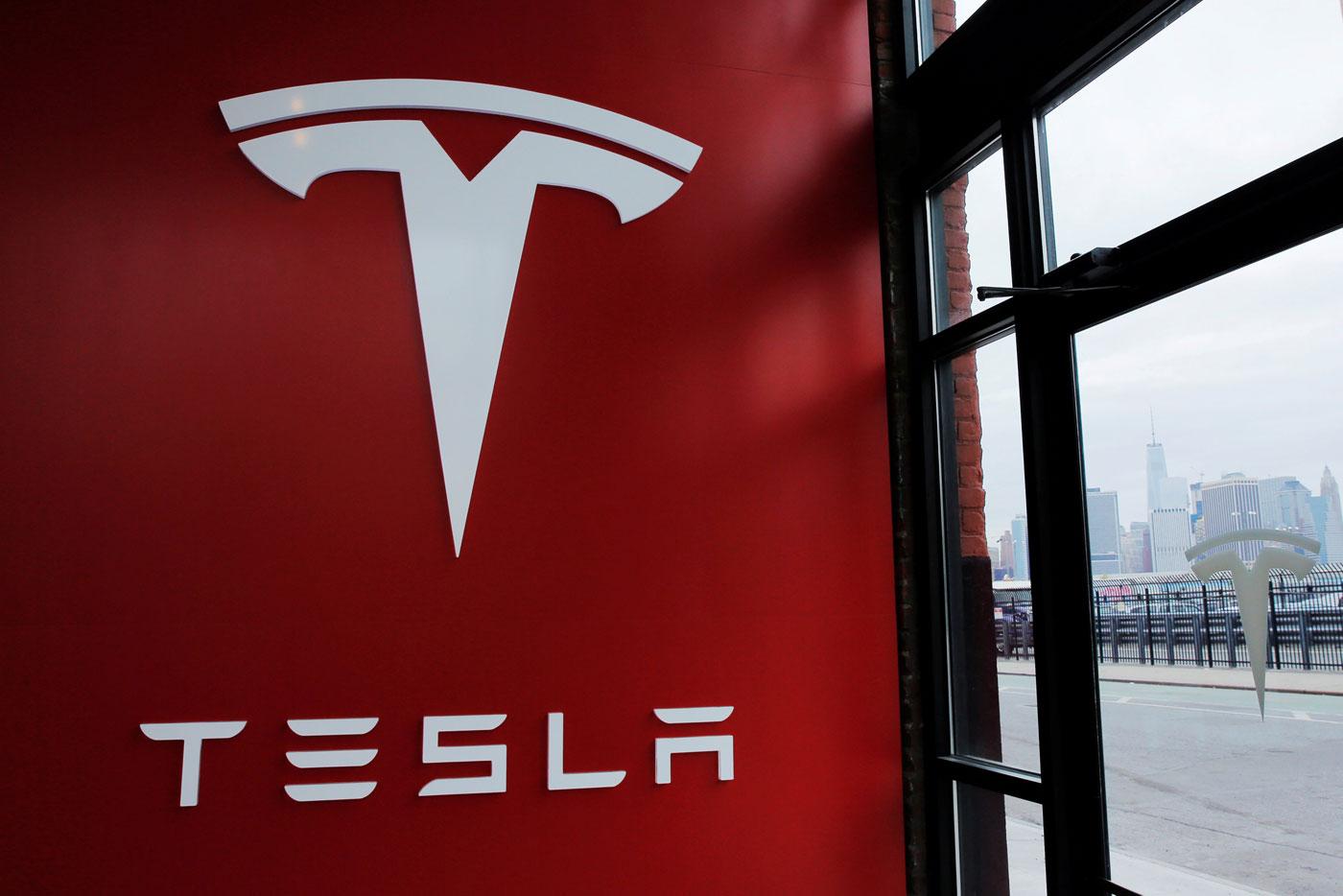
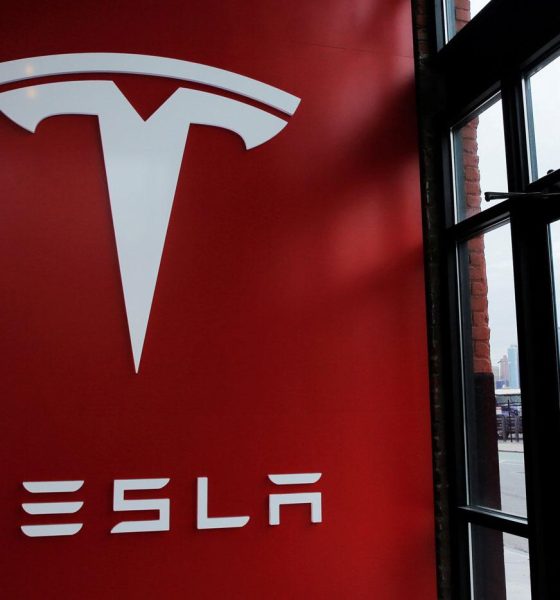
News
Report: Women discuss discrimination, harassment and “predator zone” at Tesla
At a crowded Fremont Factory meeting, female employees shared stories of sexual harassment, mistreatment by male managers, unfair promotion decisions and more, sources told The Guardian.
One of the women there was AJ Vandermeyden, the female engineer who sued the company for pervasive harassment and pay discrimination. Shortly after this town hall took place, Vandermeyden was fired.
“They just want to absolutely crush anyone who speaks up,” Vandermeyden told the news outlet. “I spoke up, and I was made a sacrificial lamb for it. It’s a scary precedent.”
Tesla has rejected Vandermeyden’s claims, saying she was terminated for “falsely attacking our company in the press.”
CEO Elon Musk did not attend the meeting of about 70-100 people. More than 20 women talked about their experiences, according to Vandermeyden and another attendee, with one woman describing parts of the company’s Fremont factory as a “predator zone” for harassment.
Vandermeyden also said that a number of women raised their hands when asked if they had been catcalled in the factory.
Some women allegedly talked about feeling unsafe and facing sexist remarks from superiors, while others talked about being dismissed and talked over in meetings with no other female employees.
One male leader spoke up and said it was unacceptable, and noted that he had daughters, according to Vandermeyden
A former female manager, who was present but no longer works for the company, told The Guardian she was offended by that comment: “It’s insulting. You shouldn’t have to have daughters to know this.”
Tesla countered by saying that “executives attended because they wanted to hear directly from employees about their experiences and learn about how to improve the workplace,” in an email obtained by The Guardian.
Tesla further disputed the news outlet’s characterization of the event by saying, “Employees stood up to ask the executives questions, share their experiences at Tesla — both positive and negative — while others spoke of things that they believed Tesla was doing right and some came with suggestions. In some instances, employees were only looking for better collaboration with their HR business partners in general and had nothing to do with any allegations of harassment.”
The company statement said that when an employee referenced an area of the factory as a “predator zone,” it “surprised many in the room who had never heard of this term.”
Tesla said that immediately after the meeting, a factory-wide message to supervisors about its “strict policy against any kind of harassment” was sent, adding, “Any complaints of catcalling in the factory are thoroughly investigated and action is taken where necessary.”
According to The Guardian, Tesla also said that “there was a lot of energy around ensuring we are proactively sourcing diverse talent and ensuring that we have an interview and assessment process that is free from bias.”
Vandermeyden said she spoke at the meeting because “it was finally giving women a venue to voice what was going on. It felt like Tesla had been saying I’m making all this up. And here were all the women saying, ‘No, it’s happening.’ It’s too big to deny.”
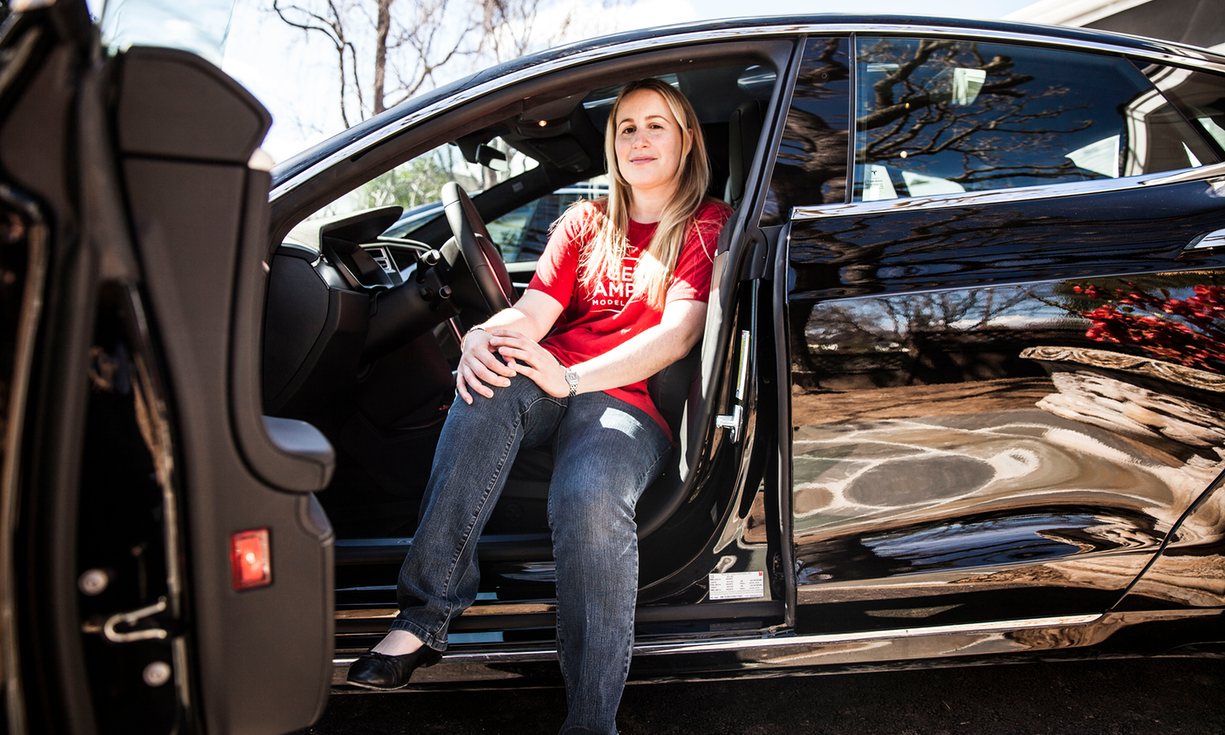
AJ Vandermeyden sits in her Tesla outside her family’s home in San Carlos, California. (Source: Ramin Talaie for the Guardian)
Vandermeyden first got national attention when she went public with her lawsuit in February of this year, although the lawsuit was filed in September 2016.
She had been with Tesla since April of 2013, and alleged that during her time there she was subjected to behavior including “inappropriate language, whistling, and cat calls” at the hands of the mostly male staff. She further claims that she was paid less than her male colleagues despite performing work “equal in skill, effort, and responsibility.”
Vandermeyden also says that her attempts to raise concerns about the quality testing of cars and office behavior toward women were ignored by male superiors.
Tesla confirmed Vandermeyden’s firing at the time saying:
“Despite repeatedly receiving special treatment at the expense of others, Ms. Vandermeyden nonetheless chose to pursue a miscarriage of justice by suing Tesla and falsely attacking our company in the press,” a spokesperson said. “After we carefully considered the facts on multiple occasions and were absolutely convinced that Ms. Vandermeyden’s claims were illegitimate, we had no choice but to end her employment at Tesla.”
This follows cases of alleged harassment at other tech companies, with Uber’s CEO Travis Kalanick recently resigning amid a reportedly turbulent office culture.
As for not working at Tesla anymore, Vandermeyden had the following to say:
“I was never your enemy,” she said. “I still believe in the importance of transitioning the world to sustainable energy, but now I don’t get to be a part of it.”

News
Tesla dominates in the UK with Model Y and Model 3 leading the way

Tesla is dominating in the United Kingdom so far through 2025, and with about two weeks left in the year, the Model Y and Model 3 are leading the way.
The Model Y and Model 3 are the two best-selling electric vehicles in the United Kingdom, which is comprised of England, Scotland, Wales, and Northern Ireland, and it’s not particularly close.
According to data gathered by EU-EVs, the Model Y is sitting at 18,890 units for the year, while the Model 3 is slightly behind with 16,361 sales for the year so far.
The next best-selling EV is the Audi Q4 e-tron at 10,287 units, lagging significantly behind but ahead of other models like the BMW i4 and the Audi Q6 e-tron.
GOOD NEWS 🇬🇧 Tesla is absolutely crushing the UK electric vehicle market in 2025 💥
The numbers are in, and the dominance is clear. With an impressive amount of 42,270 vehicles delivered year-to-date, the brand now commands a solid 9.6% market share of the total auto market 🆒… pic.twitter.com/dkiGX9kzd0
— Ming (@tslaming) December 18, 2025
The Model Y has tasted significant success in the global market, but it has dominated in large markets like Europe and the United States.
For years, it’s been a car that has fit the bill of exactly what consumers need: a perfect combination of luxury, space, and sustainability.
Both vehicles are going to see decreases in sales compared to 2024; the Model Y was the best-selling car last year, but it sold 32,610 units in the UK. Meanwhile, the Model 3 had reached 17,272 units, which will keep it right on par with last year.
Tesla sold 50,090 units in the market last year, and it’s about 8,000 units shy of last year’s pace. It also had a stronger market share last year with 13.2 percent of the sales in the market. With two weeks left in 2025, Tesla has a 9.6 percent market share, leading Volkswagen with 8 percent.
The company likely felt some impact from CEO Elon Musk’s involvement with the Trump administration and, more specifically, his role with DOGE. However, it is worth mentioning that some months saw stronger consumer demand than others. For example, sales were up over 20 percent in February. A 14 percent increase followed this in June.
News
Tesla Insurance officially expands to new U.S. state
Tesla’s in-house Insurance program first launched back in late 2019, offering a new way to insure the vehicles that was potentially less expensive and could alleviate a lot of the issues people had with claims, as the company could assess and repair the damage itself.
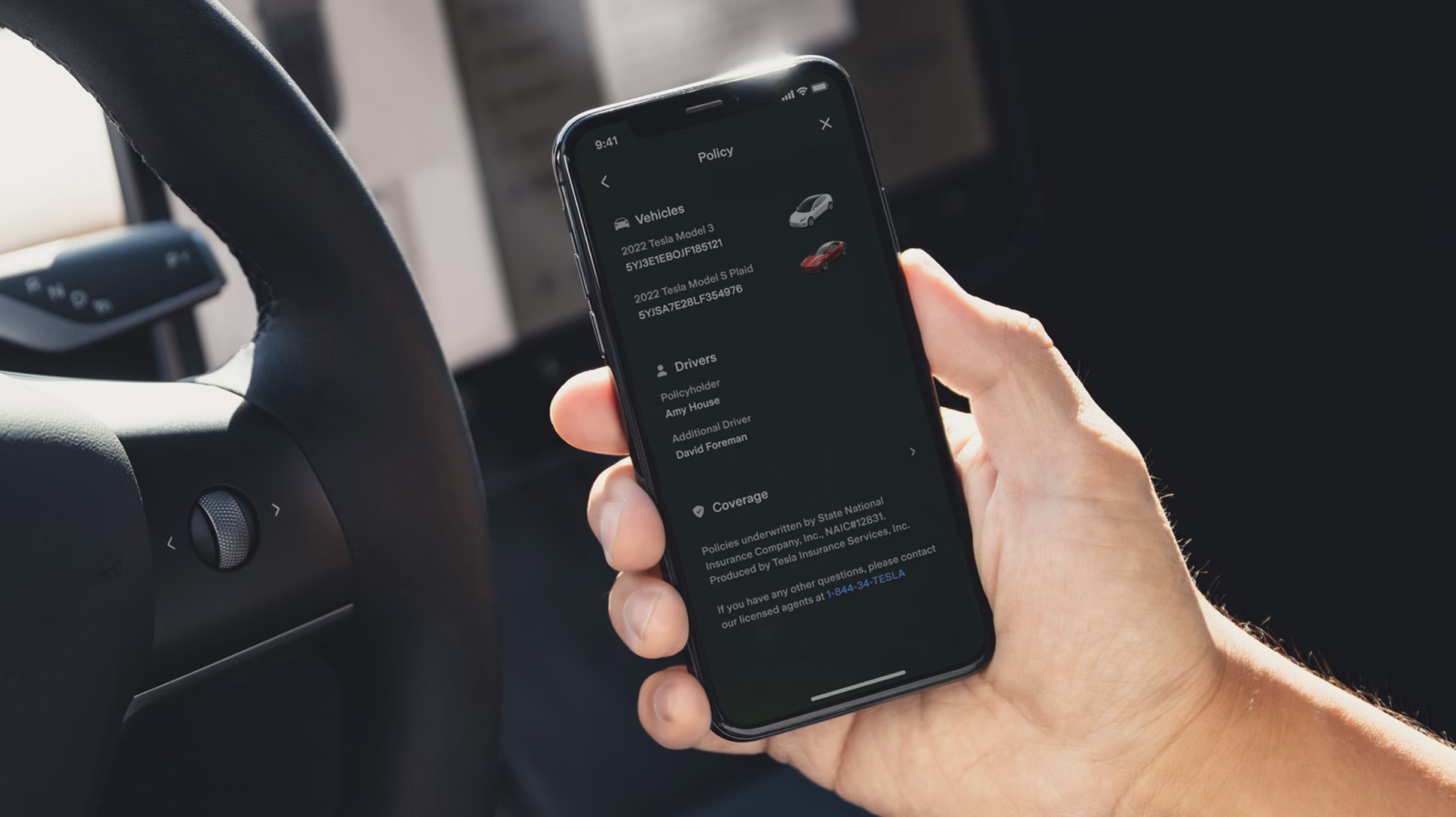
Tesla Insurance has officially expanded to a new U.S. state, its thirteenth since its launch in 2019.
Tesla has confirmed that its in-house Insurance program has officially made its way to Florida, just two months after the company filed to update its Private Passenger Auto program in the state. It had tried to offer its insurance program to drivers in the state back in 2022, but its launch did not happen.
Instead, Tesla refiled the paperwork back in mid-October, which essentially was the move toward initiating the offering this month.
BREAKING: Tesla Insurance has just officially launched in Florida.
This is the first new state to receive @Tesla Insurance in more than 3 years. In total, Tesla insurance is now available in 13 U.S. states (map in thread below of all the states).
Tesla Insurance in Florida uses… pic.twitter.com/bDwh1IV6gD
— Sawyer Merritt (@SawyerMerritt) December 17, 2025
Tesla’s in-house Insurance program first launched back in late 2019, offering a new way to insure the vehicles that was potentially less expensive and could alleviate a lot of the issues people had with claims, as the company could assess and repair the damage itself.
It has expanded to new states since 2019, but Florida presents a particularly interesting challenge for Tesla, as the company’s entry into the state is particularly noteworthy given its unique insurance landscape, characterized by high premiums due to frequent natural disasters, dense traffic, and a no-fault system.
Annual average premiums for Florida drivers hover around $4,000 per year, well above the national average. Tesla’s insurance program could disrupt this, especially for EV enthusiasts. The state’s growing EV adoption, fueled by incentives and infrastructure development, aligns perfectly with Tesla’s ecosystem.
Moreover, there are more ways to have cars repaired, and features like comprehensive coverage for battery damage and roadside assistance tailored to EVs address those common painpoints that owners have.
However, there are some challenges that still remain. Florida’s susceptibility to hurricanes raises questions about how Tesla will handle claims during disasters.
Looking ahead, Tesla’s expansion of its insurance program signals the company’s ambition to continue vertically integrating its services, including coverage of its vehicles. Reducing dependency on third-party insurers only makes things simpler for the company’s automotive division, as well as for its customers.
News
Tesla Full Self-Driving gets sparkling review from South Korean politician
“Having already ridden in an unmanned robotaxi, the novelty wasn’t as strong for me, but it drives just as well as most people do. It already feels like a completed technology, which gives me a lot to think about.”
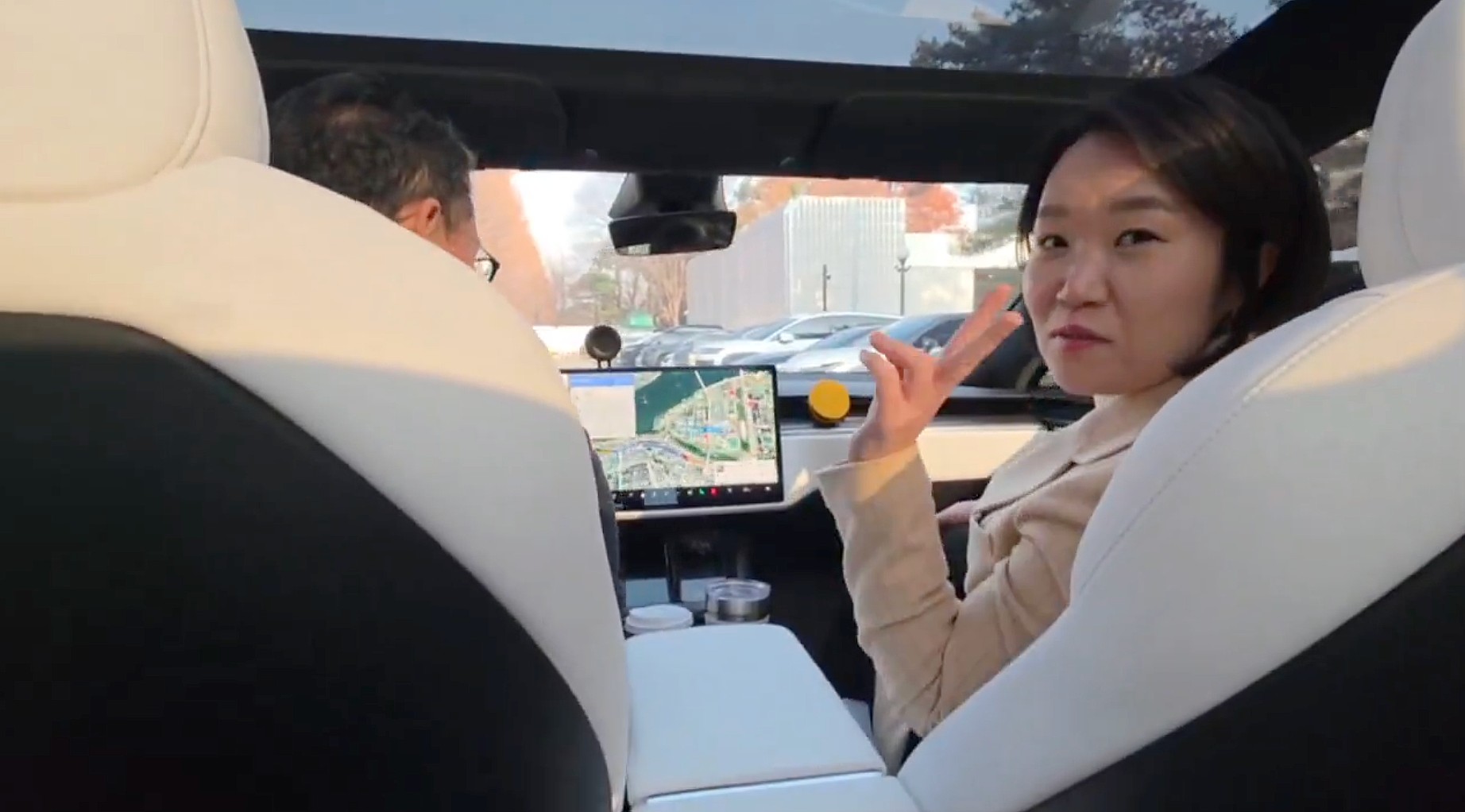
Tesla Full Self-Driving got its first sparkling review from South Korean politician Lee So-young, a member of the country’s National Assembly, earlier this week.
Lee is a member of the Strategy and Finance Committee in South Korea and is a proponent of sustainable technologies and their applications in both residential and commercial settings. For the first time, Lee was able to utilize Tesla’s Full Self-Driving technology as it launched in the country in late November.
Her thoughts on the suite were complimentary to the suite, stating that “it drives just as well as most people do,” and that “it already feels like a completed technology.”
드디어 오늘, 서울에서 테슬라 FSD 체험 했습니다.
JiDal Papa님의 모델S 협찬에 힘입어^^ 파파님 정말 감사합니다.
국회 -> 망원시장 -> 홍익대 -> 국회 복귀 코스였고요.
이미 무인 로보택시를 타봐서 그런지 신기함은
덜했지만, 웬만한 사람만큼 운전을 잘하네요.이미 완성된 기술이라고… pic.twitter.com/8pAidHBpRG
— 이소영 국회의원 (Soyoung Lee) (@im_soyounglee) December 17, 2025
Her translated post says:
“Finally, today I got to experience Tesla FSD in Seoul. Thanks to the Model S sponsored by JiDal Papa^^, I’m truly grateful to Papa. The route was from the National Assembly -> Mangwon Market -> Hongik University -> back to the National Assembly. Having already ridden in an unmanned robotaxi, the novelty wasn’t as strong for me, but it drives just as well as most people do. It already feels like a completed technology, which gives me a lot to think about. Once it actually spreads into widespread use, I feel like our daily lives are going to change a lot. Even I, with my license gathering dust in a drawer, don’t see much reason to learn to drive a manual anymore.”
Tesla Full Self-Driving officially landed in South Korea in late November, with the initial launch being one of Tesla’s most recent, v14.1.4.
It marked the seventh country in which Tesla was able to enable the driver assistance suite, following the United States, Puerto Rico, Canada, China, Mexico, Australia, and New Zealand.
It is important to see politicians and figures in power try new technologies, especially ones that are widely popular in other regions of the world and could potentially revolutionize how people travel globally.








